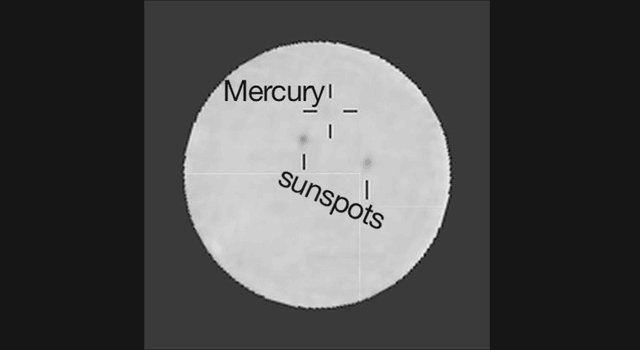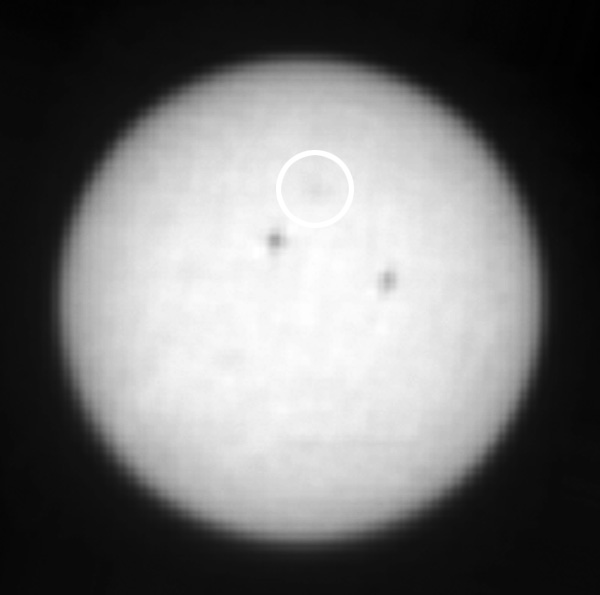NASA’s Curiosity rover may be busy exploring the rugged and rocky interior of Gale Crater, but it does get a chance to skygaze on occasion. And while looking at the Sun on June 3, 2014 (mission Sol 649) the rover’s Mastcam spotted another member of our Solar System: tiny Mercury, flitting across the Sun’s face.
Silhouetted against the bright disk of the Sun, Mercury barely appears as a hazy blur in the filtered Mastcam images. But it was moving relatively quickly during the transit, passing the darker smudges of two Earth-sized sunspots over the course of several hours.
It’s the first time Mercury has ever been imaged from Mars, and also the first time we’ve observed a planet transiting our Sun from another world besides our own.
Watch an animation of the transit below:

Because the sunspots move along with the rotation of the Sun (and the Sun rotates once avery 25 days around its equator) Mercury makes a fast pass as it travels along on one of its 88-day-long years.
Watch an HD version of the event here.
In reality this was no chance spotting, but rather a carefully calculated observation using the Mastcam’s right 100mm telephoto lens and neutral density filter, which is used to routinely image the Sun in order to measure the dustiness of the Martian atmosphere.
“This is a nod to the relevance of planetary transits to the history of astronomy on Earth. Observations of Venus transits were used to measure the size of the solar system, and Mercury transits were used to measure the size of the sun.”
– Mark Lemmon, Texas A&M University, member of the Mastcan science team
Read more: Amazing Transit of Venus Images from Around the World
The next chance for Curiosity to spot Mercury will come in April 2015 and, if the rover is still operating by then — perhaps with some upgrades by future human visitors? — it may capture Earth similarly passing across the Sun in November of 2084.
Source: NASA/JPL
Image/animation credit: NASA/JPL-Caltech/MSSS/Texas A&M

